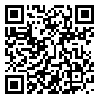Volume 7, Issue 6 (2-2012)
J Health Syst Res 2012, 7(6): 0-0 |
Back to browse issues page
Download citation:
BibTeX | RIS | EndNote | Medlars | ProCite | Reference Manager | RefWorks
Send citation to:



BibTeX | RIS | EndNote | Medlars | ProCite | Reference Manager | RefWorks
Send citation to:
بهنام خدارحمي, حبيباله دهقان, سيد محسن حسيني, محمد زينالديني. ارزیابی تأثیر سه نوع ماسک تنفسی تصفیه کننده هوا بر روی ضربان قلب در بار کاری مختلف. J Health Syst Res 2012; 7 (6)
URL: http://hsr.mui.ac.ir/article-1-330-en.html
URL: http://hsr.mui.ac.ir/article-1-330-en.html
1- MSc Student,Student Research Committee, Department of Occupational Health Engineering, School of Health, Isfahan University of Medical Science, Isfahan, Iran
2- Lecture, Department of Occupational Health Engineering, School of Health, Isfahan University of Medical Science, Isfahan, Iran.
3- Assistant Professor, Department of Biostatistics and Epidemiology, School of Health, Isfahan University of Medical Science, Isfahan, Iran.
4- MSc Student, Department of Occupational Health Engineering, School of Health, Isfahan University of Medical Science, Isfahan, Iran
2- Lecture, Department of Occupational Health Engineering, School of Health, Isfahan University of Medical Science, Isfahan, Iran.
3- Assistant Professor, Department of Biostatistics and Epidemiology, School of Health, Isfahan University of Medical Science, Isfahan, Iran.
4- MSc Student, Department of Occupational Health Engineering, School of Health, Isfahan University of Medical Science, Isfahan, Iran
Abstract: (1571 Views)
Background: Despite the widespread use of respiratory protection equipment in different jobs, the effects of these devices on people__AWT_QUOTE__s physiological responses are not well recognized as yet. Therefore, the aim of this study is to evaluate the effect of the air purifying respiratory protection equipment on the heart rate.Methods: This experimental study was performed in a climate chamber under controlled temperature and humidity conditions (WBGT = 19.8 ± 0.57). The heart rate of 11 subjects with mean(SD) age of 24.1 (2.34) years, height of 172 (4.2) centimeter and BMI of 22.4 (1.1) in a resting state (HR rest) and using three types of respiratory masks including valve mask (Filtration class FFP2, JFY1021 model, Manufactured by APASCIANI), half face (The two filtered Duetta P3 model, with P3 cartridge, Manufacture by APASCIANI) and full face (TR2002/BN model, Manufacture by APASCIANI) and in the three levels of physical activity of low(speed 1.34m/s incline 0%), moderate (speed 1.34m/s incline 5%) and high (speed 1.34m/s incline 10%) was measured and recorded. Duration of light, medium and high activity was, 30, 30 and 20 minutes respectively. The heart rate was recorded in 5 minute intervals. Data were analyzed using repeated measurement ANOVA, and paired t-test statistical tests and by SPSS software 16.Findings: Mean (SD) heart rate of 11 subjects in the state without masks during low, moderate and high activity was 93.5(13.1), 109.7(18.1), and 119.6(25.8) bpm respectively. The mean (SD) heart rate when using valves mask during low, moderate and high activity was 102.8(9.7), 116.7(16.0), and 132.1(23.2) bpm respectively. Mean (SD) heart rate when using full face mask during low, moderate and high activity was 109.3(14.7), 125(17.4), and 140.1(23.1) bpm respectively. There was a significant difference between mean heart rate during use of three types of respiratory masks and without mask in the various levels of physical activity (p < 0.001). Moreover, there was a significant difference between mean heart rate in the various levels of physical activity when using a valve and a half face mask in comparison with using a full face mask.Conclusion: using respiratory masks in comparison to not using masks in all three types of workload significantly increases the heart rate. Moreover, the mean heart rate increases when using a full face mask in comparison with a valve and a half face mask.
Type of Study: Research |
Subject:
education health and promotion
Received: 2020/07/16 | Accepted: 2023/03/4 | Published: 2023/03/4
Received: 2020/07/16 | Accepted: 2023/03/4 | Published: 2023/03/4
| Rights and permissions | |
 |
This work is licensed under a Creative Commons Attribution-NonCommercial 4.0 International License. |





